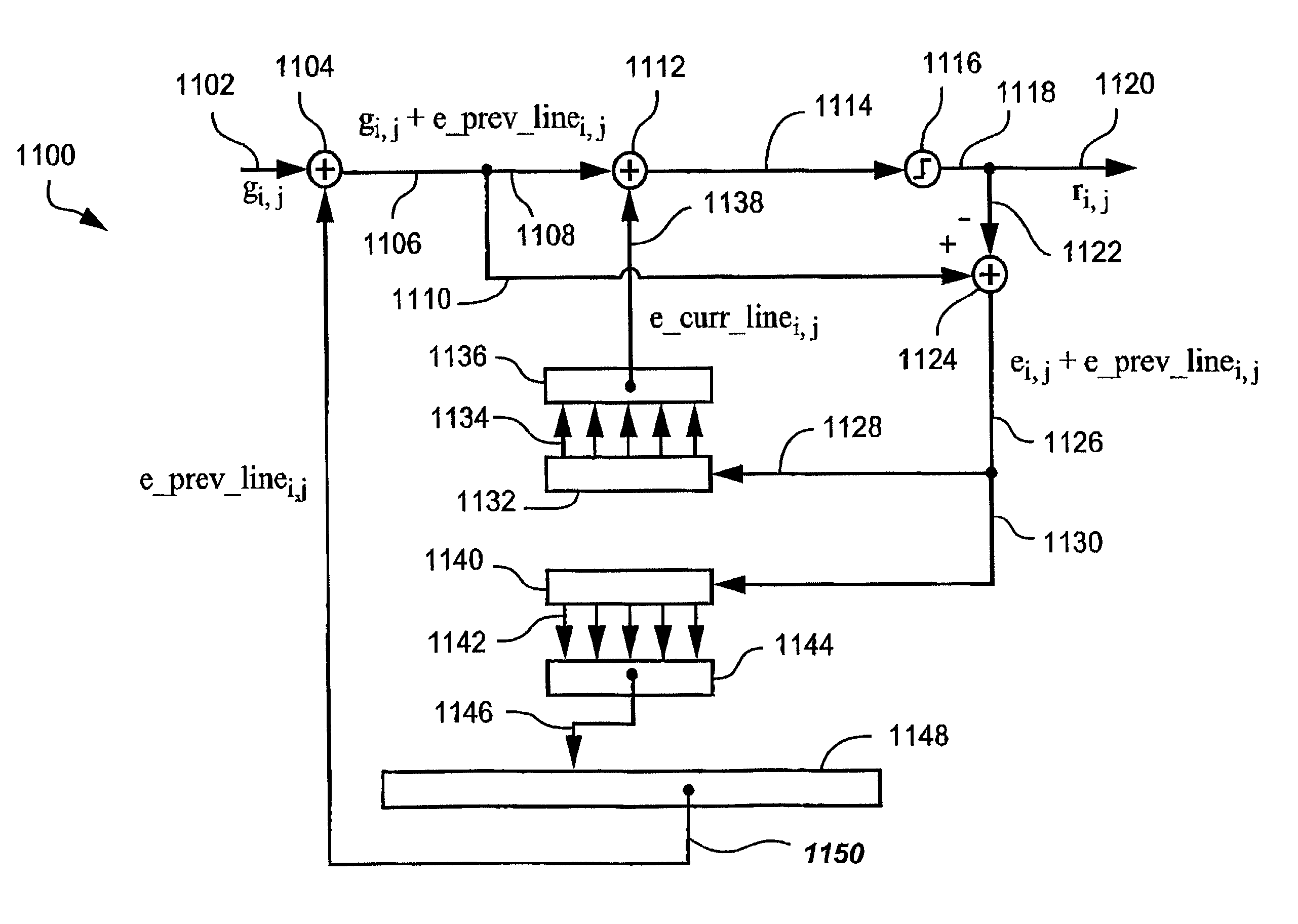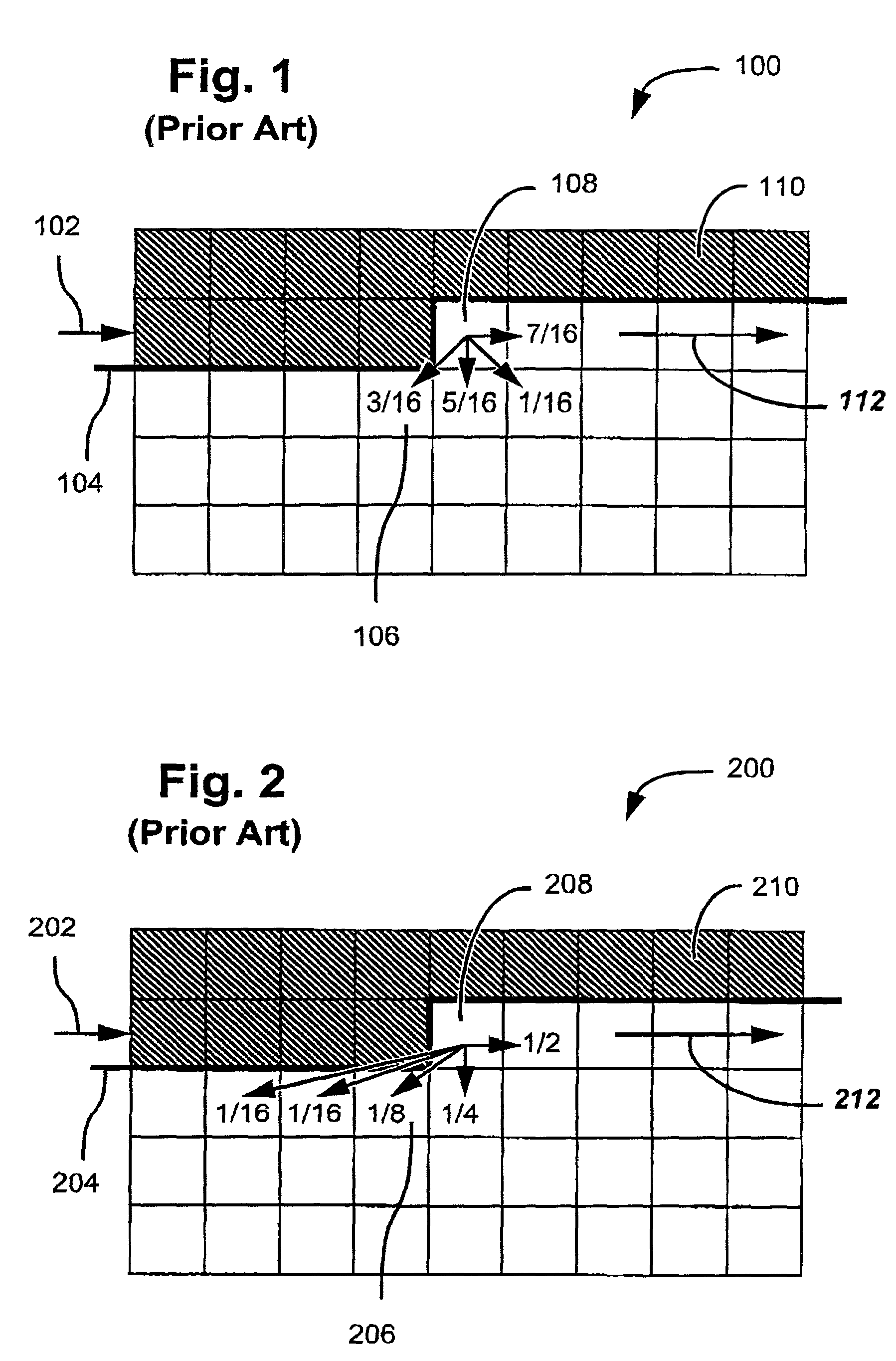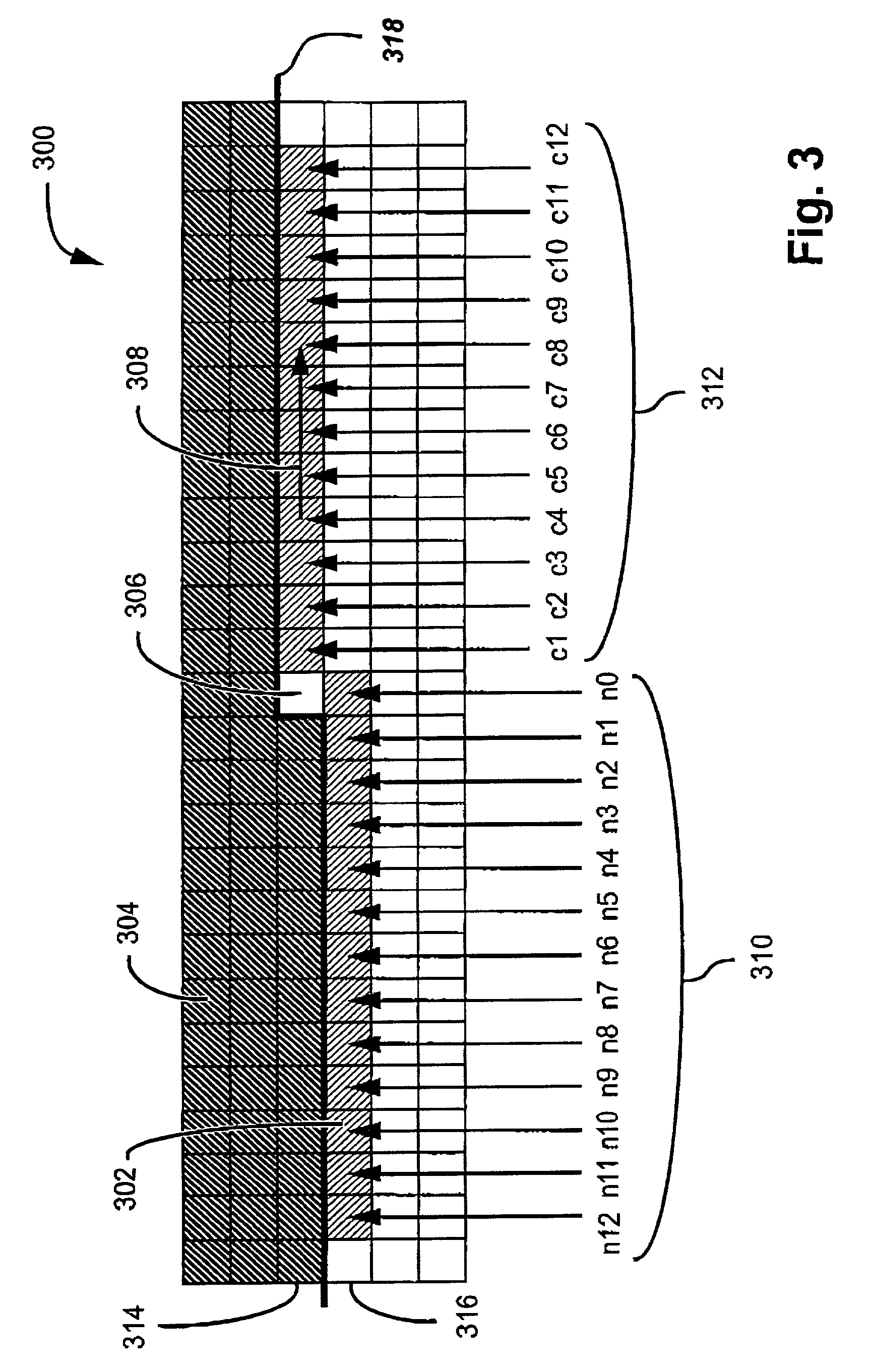Error diffusion using next scanline error impulse response
- Summary
- Abstract
- Description
- Claims
- Application Information
AI Technical Summary
Benefits of technology
Problems solved by technology
Method used
Image
Examples
experiment 1
[0554]The next scanline error impulse response function is a sampling of the 2-sided exponential distribution:
hcurr[k]=a·wk for k>=1
hnext[k]=((1−w) / (1+w))·w|k|
[0555]where a is a positive constant and 0
[0556]When a=1 and w=½, this form of error distribution matches that already mentioned as an extension of the error diffusion of Shiau and Fan. In that case, halftone output at extreme grey levels suffers from worm artifacts, where the horizontal separation of minority pixels is too small.
[0557]These worm artifacts can be reduced by increasing either of the parameters a or w. However, modifying these parameters so that minority pixels at the extreme grey levels are better separated, introduces other unpleasant artifacts, including artifacts where for other grey levels the vertical separation between minority pixels becomes too small.
experiment 2
[0558]The next scanline error impulse response function is a sampling of the gaussian distribution:
hcurr[k]=a·exp(−π(k / b)2) for k>=1
hnext[k]=c·exp(−π(k / b)2)
[0559]where a, b, c are positive constants, with c chosen so that Σkhnext[k]=1;
[0560]b is the standard deviation of the corresponding continuous distribution
[0561]When a=½ and b=4, halftone output at extreme grey levels suffer from worm artifacts. These artifacts can be reduced by increasing a or b. However, modifying these parameters so that minority pixels at these grey levels are better separate, introduces other unpleasant artifacts, including where for other grey levels the vertical separation between minority pixels becomes too small.
experiment 3
[0562]The next scanline error impulse response function is a sampling of the Cauchy distribution:
hcurr[k]=a·(1 / (b2+k2)) for k>=1
hnext[k]=c·(1 / (b2+k2))
[0563]where a, b, c are positive constants, with c chosen so that Σkhnext[k]=1;
[0564]b controls the degree of spread of the distribution
[0565]When a=1 and b=1, the halftone patterns for all grey levels with sparse halftone patterns are well spread, showing no worm artifacts. Also the general quality (absence of unwanted textures) of the halftone output is high across all grey levels.
[0566]For 8-bit per pixel monochrome images, the extreme sparse halftone patterns correspond to grey levels 1 and 254. By allowing fractional grey levels less than 1 the behaviour of error diffusion can be observed for halftone patterns which are much more sparse than the halftone patterns for grey level 1.
[0567]It is noteworthy that the very sparse halftone patterns for sub-unity fractional grey values are also well spread when the Cauchy distribution is u...
PUM
 Login to View More
Login to View More Abstract
Description
Claims
Application Information
 Login to View More
Login to View More - R&D
- Intellectual Property
- Life Sciences
- Materials
- Tech Scout
- Unparalleled Data Quality
- Higher Quality Content
- 60% Fewer Hallucinations
Browse by: Latest US Patents, China's latest patents, Technical Efficacy Thesaurus, Application Domain, Technology Topic, Popular Technical Reports.
© 2025 PatSnap. All rights reserved.Legal|Privacy policy|Modern Slavery Act Transparency Statement|Sitemap|About US| Contact US: help@patsnap.com



